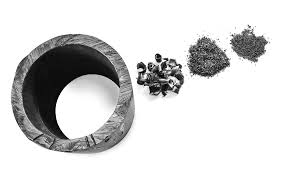Dec . 22, 2024 03:32 Back to list
ppr pipe for hot water supply service
Understanding PPR Pipes for Hot Water Supply Services
PPR (Polypropylene Random Copolymer) pipes have gained immense popularity in the construction and plumbing industries, particularly for hot water supply services. Their unique properties offer numerous advantages that make them a preferred choice over traditional materials such as copper and PVC. In this article, we will explore the features, benefits, installation, and applications of PPR pipes in hot water supply systems.
What Are PPR Pipes?
PPR pipes are manufactured from a specific type of polypropylene, making them lightweight yet highly durable. The random copolymer structure of the polymer provides enhanced flexibility and resistance to impact, thermal fluctuations, and chemical corrosion. PPR pipes come in a variety of diameters and wall thicknesses, allowing for versatility in different applications.
Advantages of PPR Pipes for Hot Water Supply
1. Temperature Resistance One of the most critical features of PPR pipes is their ability to withstand high temperatures. They can handle temperatures up to 95°C (203°F) without compromising their structural integrity, making them ideal for hot water supply.
2. Durability PPR pipes have a long lifespan of up to 50 years or more, provided they are installed correctly. Their resistance to scaling and corrosion ensures that they maintain their performance over time, reducing the risk of leaks and failures.
3. Low Thermal Conductivity PPR pipes have low thermal conductivity, which minimizes heat loss during water transportation. This inherent property contributes to energy efficiency, making hot water supply systems more cost-effective.
4. Lightweight and Easy to Install Compared to traditional piping materials, PPR pipes are significantly lighter. This characteristic simplifies handling and installation, allowing for fast and efficient plumbing work. Their flexible nature also permits easier adjustments during installation.
5. Chemical Resistance PPR pipes can withstand a wide range of chemicals without degrading. This property makes them suitable for various household and industrial applications, including hot water distribution systems.
6. Environmentally Friendly PPR pipes are recyclable and produced without toxic substances, making them an environmentally friendly choice. Their long lifespan further contributes to sustainability by reducing the need for frequent replacements.
ppr pipe for hot water supply service

Installation of PPR Pipes
The installation of PPR pipes involves a process known as fusion welding. This technique creates a strong and leak-proof joint by melting the edges of the pipe and the fitting, allowing them to fuse as they cool. The process is efficient and fast, often resulting in fewer potential weak points compared to traditional joining methods like threading or soldering.
Proper installation begins with cutting the pipe to the required length, followed by preparing the surfaces by removing any dust or grease. During fusion welding, careful attention must be paid to temperature and joining time to ensure a strong bond. Once the pipes are assembled, they must be allowed to cool and set before being put into service.
Applications of PPR Pipes
PPR pipes are versatile and can be used in various applications beyond hot water supply services. They are widely used in
- Residential Hot Water Systems PPR pipes are increasingly being used in modern homes for efficient hot water distribution systems, ensuring reliable service and durability.
- Commercial Plumbing Many businesses and commercial establishments rely on PPR pipes for their plumbing needs due to their robustness and long-term performance.
- Heating Systems PPR is commonly used in heating installations, including underfloor heating and radiators, providing efficient heat transport.
- Industrial Applications In industries where hot water transport is essential, PPR pipes offer an effective solution resistant to the conditions often found in industrial environments.
Conclusion
PPR pipes stand out as a superior choice for hot water supply services due to their temperature resistance, durability, and ease of installation. As the demand for efficient and sustainable plumbing solutions continues to grow, PPR pipes will likely play a central role in both residential and commercial applications. Their numerous advantages make them a smart investment for anyone looking to ensure a reliable hot water supply system while minimizing maintenance costs over time.
-
High-Quality PVC Borehole Pipes Durable & Versatile Pipe Solutions
NewsJul.08,2025
-
High-Quality PVC Perforated Pipes for Efficient Drainage Leading Manufacturers & Factories
NewsJul.08,2025
-
High-Quality PVC Borehole Pipes Durable Pipe Solutions by Leading Manufacturer
NewsJul.08,2025
-
High-Quality PVC Borehole Pipes Reliable PVC Pipe Manufacturer Solutions
NewsJul.07,2025
-
High-Quality UPVC Drain Pipes Durable HDPE & Drain Pipe Solutions
NewsJul.07,2025
-
High-Quality Conduit Pipes & HDPE Conduit Fittings Manufacturer Reliable Factory Supply
NewsJul.06,2025

